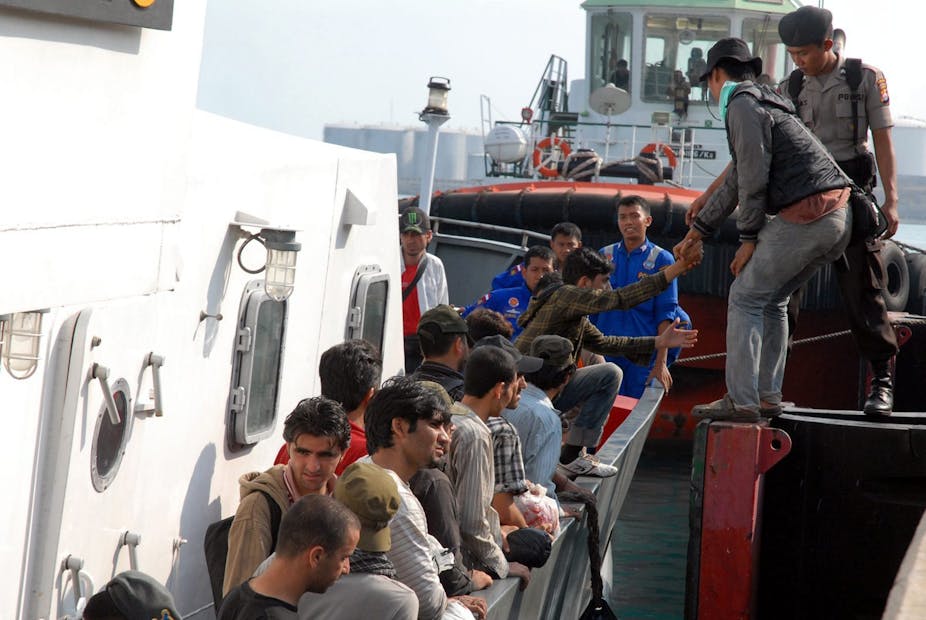The recently-signed deal between Australia and Papua New Guinea on refugees is being promoted by the Australian government as a “regional settlement arrangement”. But it is really? And how does it compare to other regional agreements in the world?
The fact that the Australian government is attempting to establish regional partnerships on asylum is a good thing. The preamble to the United Nations’ Convention relating to the Status of Refugees emphasises the importance of “international co-operation” in achieving a solution to the problem of asylum. The UN High Commissioner for Refugees has also highlighted the importance of sharing the burden of refugees more fairly among nations.
The Regional Cooperation Framework agreed at the Bali Process in 2011 established the groundwork for cooperation in the Asia Pacific. However, this framework is not yet sufficiently developed to permit inter-country transfers of the kind that will occur under Rudd’s new PNG arrangement.
An example of a workable regional arrangement which complies with international law exists in Europe. Transfers between European Union countries are governed by an agreement called the Dublin Convention.
Under the Dublin Convention, asylum seekers are expected to lodge an asylum claim in the first European Union country in which they arrive (generally Spain, Italy and Greece). If they travel to another EU state, those countries can return the person back to their original country. Asylum seekers are expected to lodge their refugee claim in that first EU country and if accepted as a refugee, are resettled there.
Although southern EU nations such as Spain and Greece have been economically challenged by recent austerity measures, they are developed countries with established democracies.
The EU asylum system shows it is possible for signatories to the refugee convention to transfer asylum seekers between one another. However, and it is a big “however”, certain regional standards and mechanisms must be in place for this to occur.
In the EU, transfers are supported by harmonised regional asylum directives. These binding documents set out minimum standards on refugee law, procedures and living conditions. Importantly, the standards are linked to the refugee convention. The EU also has a level of uniformity on human rights standards. This arises from the existence of binding treaties such as the EU Charter on Fundamental Rights and the European Convention on Human Rights.
Transfers are also supported by strong regional oversight bodies, such as the European Court of Justice and European Court of Human Rights. For instance, in 2011 the European Convention on Human Rights held that Greece had breached its human rights obligations because of deficiencies in its asylum system. Currently no EU country can transfer asylum seekers to Greece as a result of that ruling.
In contrast to the European asylum seeker processes, no such regional mechanisms yet exist in the Asia Pacific region. The Bali Process has operated since 2002, but this is primarily an anti-people smuggling initiative.
There is no doubt that the current refugee situation in Australia requires the establishment of a regional framework. However, it is questionable whether the Australian government’s promotion of the PNG deal as a “regional arrangement” is workable when the supporting mechanisms are not yet in place to ensure countries adhere to minimum standards.
It is important to note that the arrangement permits resettlement in PNG and “any other participating regional state”. Such a wider use of transfers would clearly require supporting regional standards.
Internationally, poor countries overwhelmingly shoulder the main burden of protecting refugees. Statistics show 80% of the world’s refugees are hosted by developing countries. The PNG arrangement only further exacerbates this imbalance by placing pressure on our less developed neighbour to process and support asylum seekers from Australia.
To utilise the words of Australian prime minister Kevin Rudd, “fair shake of the sauce bottle” please. The PNG arrangement may involve a country in our region, but it is not a sincere, workable regional framework on asylum. It has been agreed to in a terrible rush. It involves transferring vulnerable asylum seekers to a poor nation when there are no common regional standards in place to ensure those people - human beings with rights - are protected.

